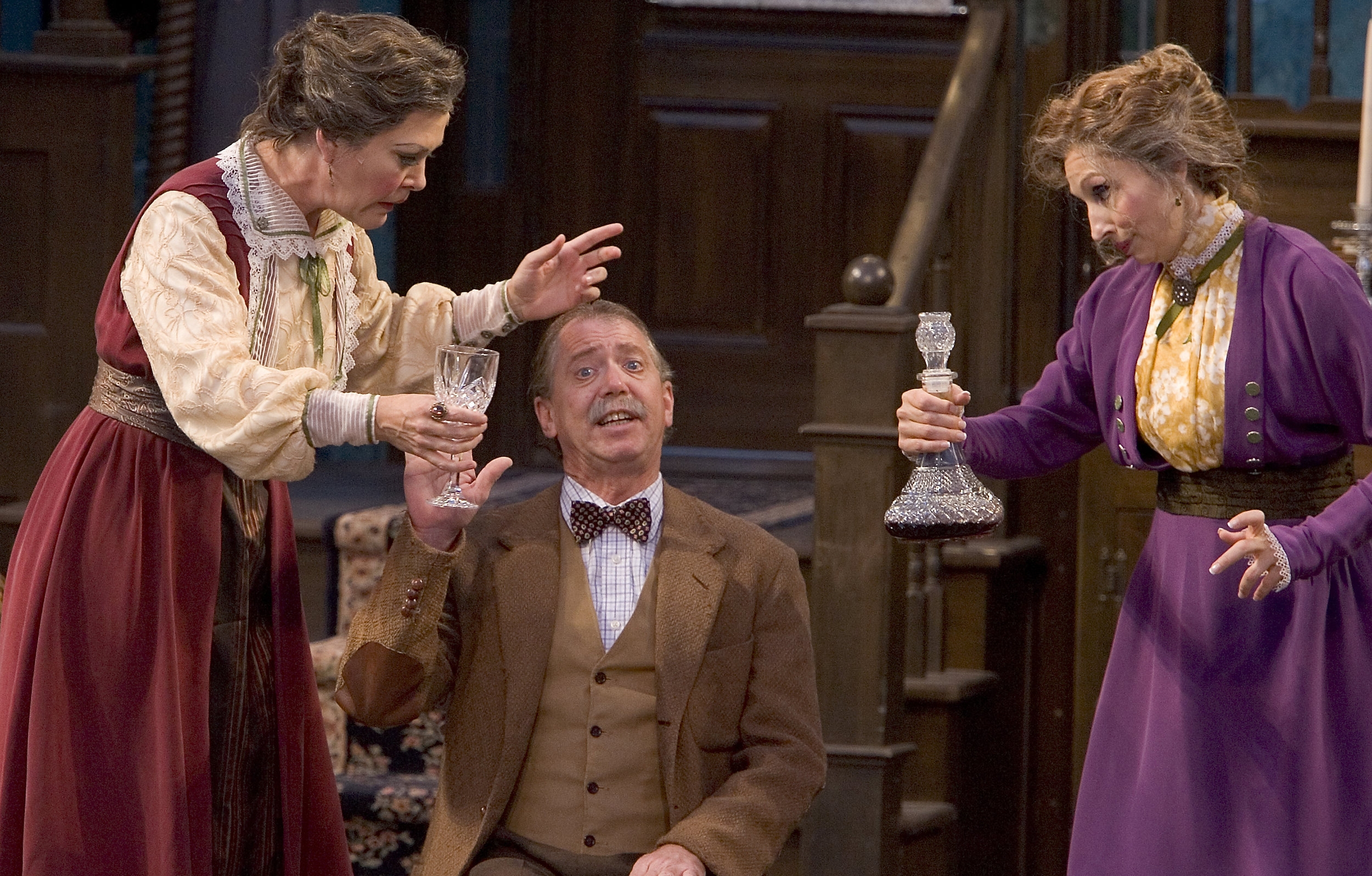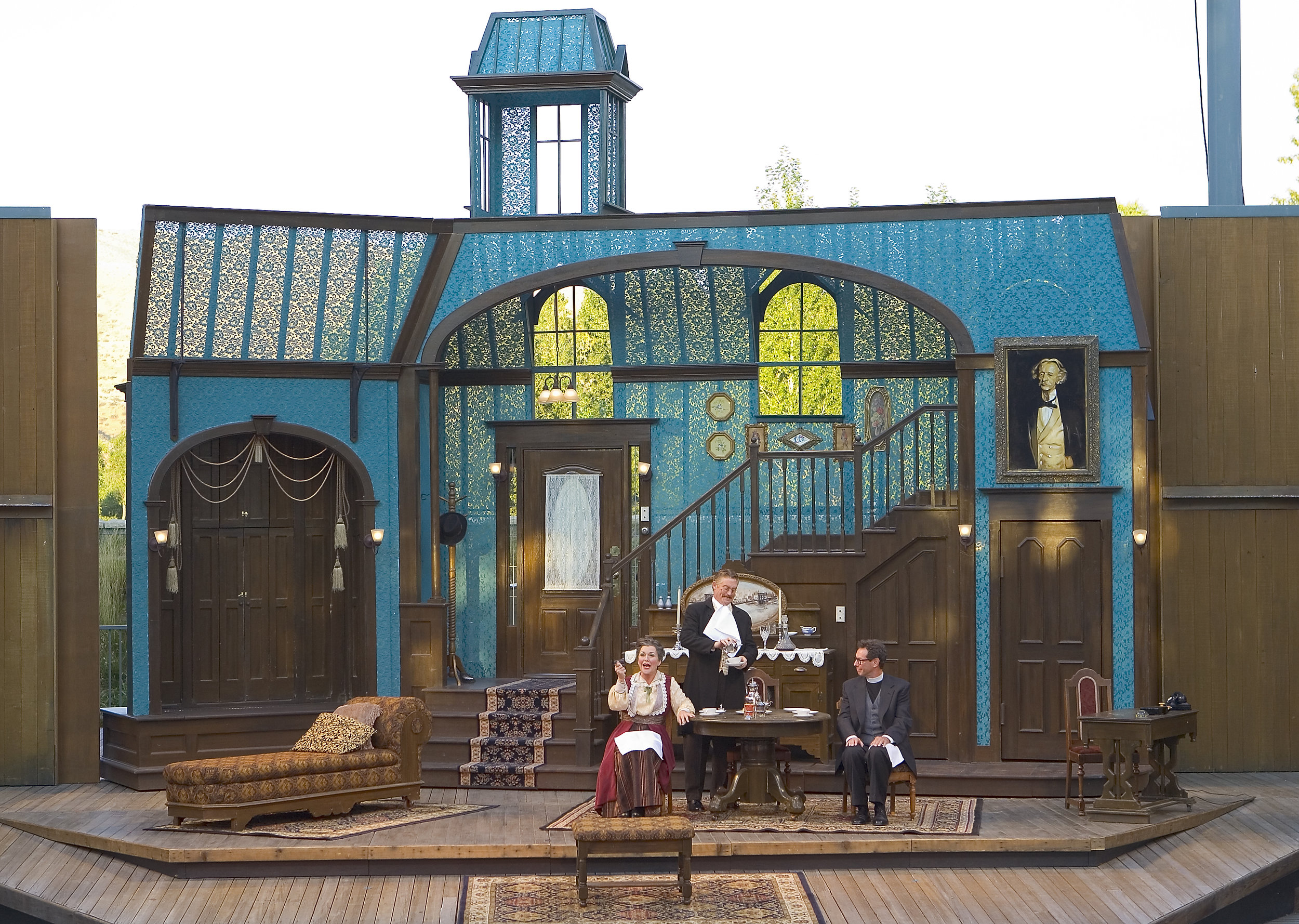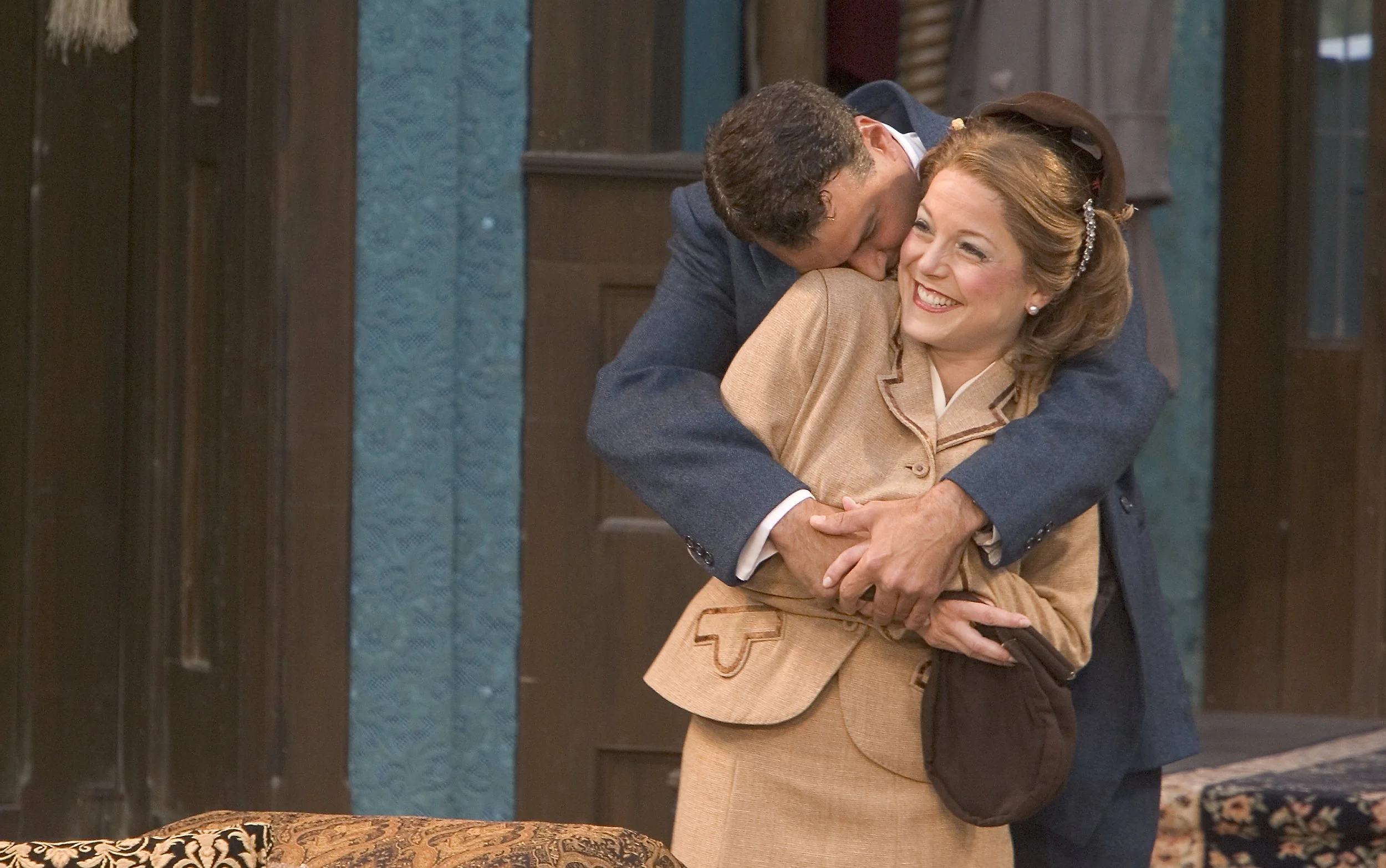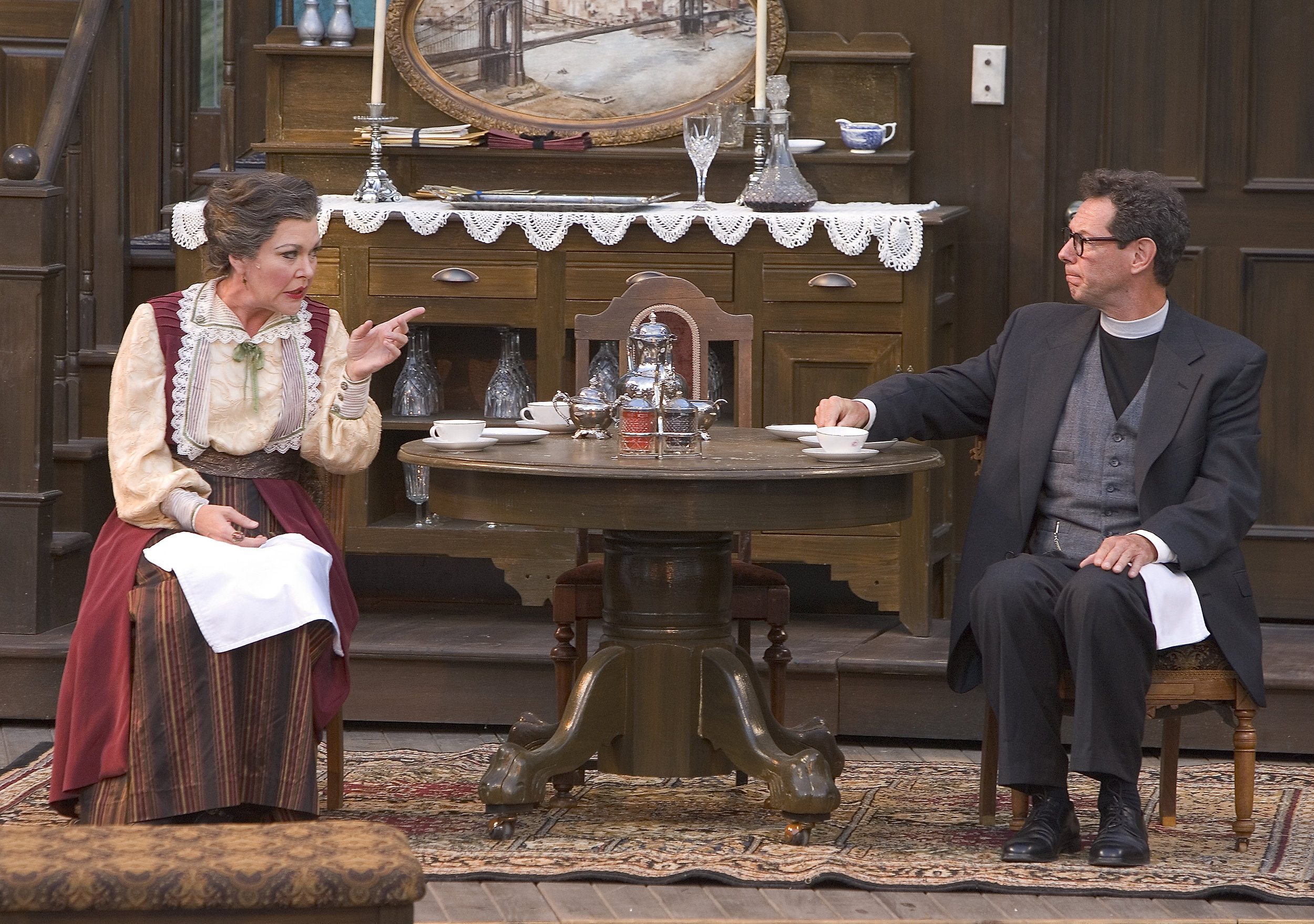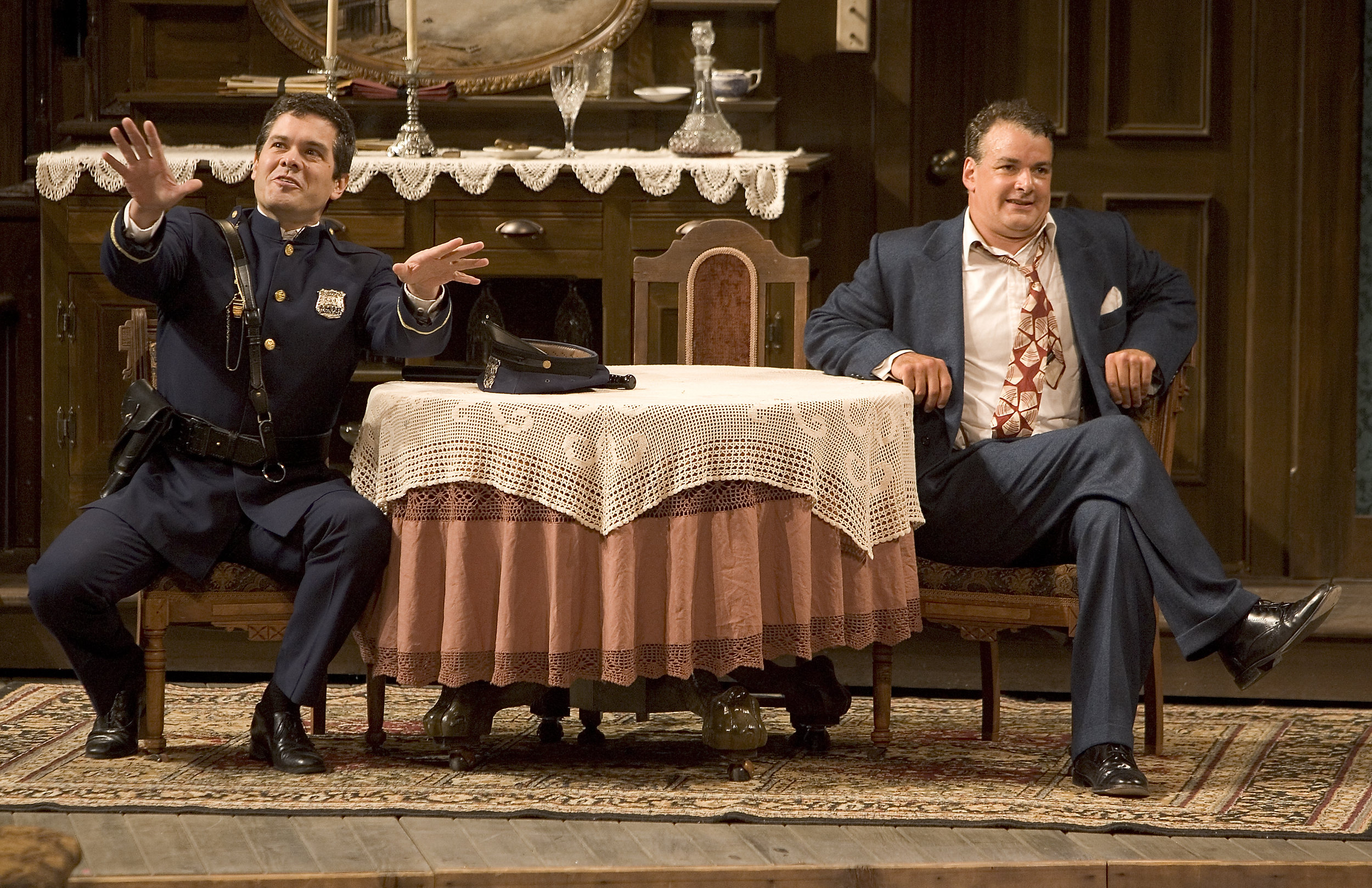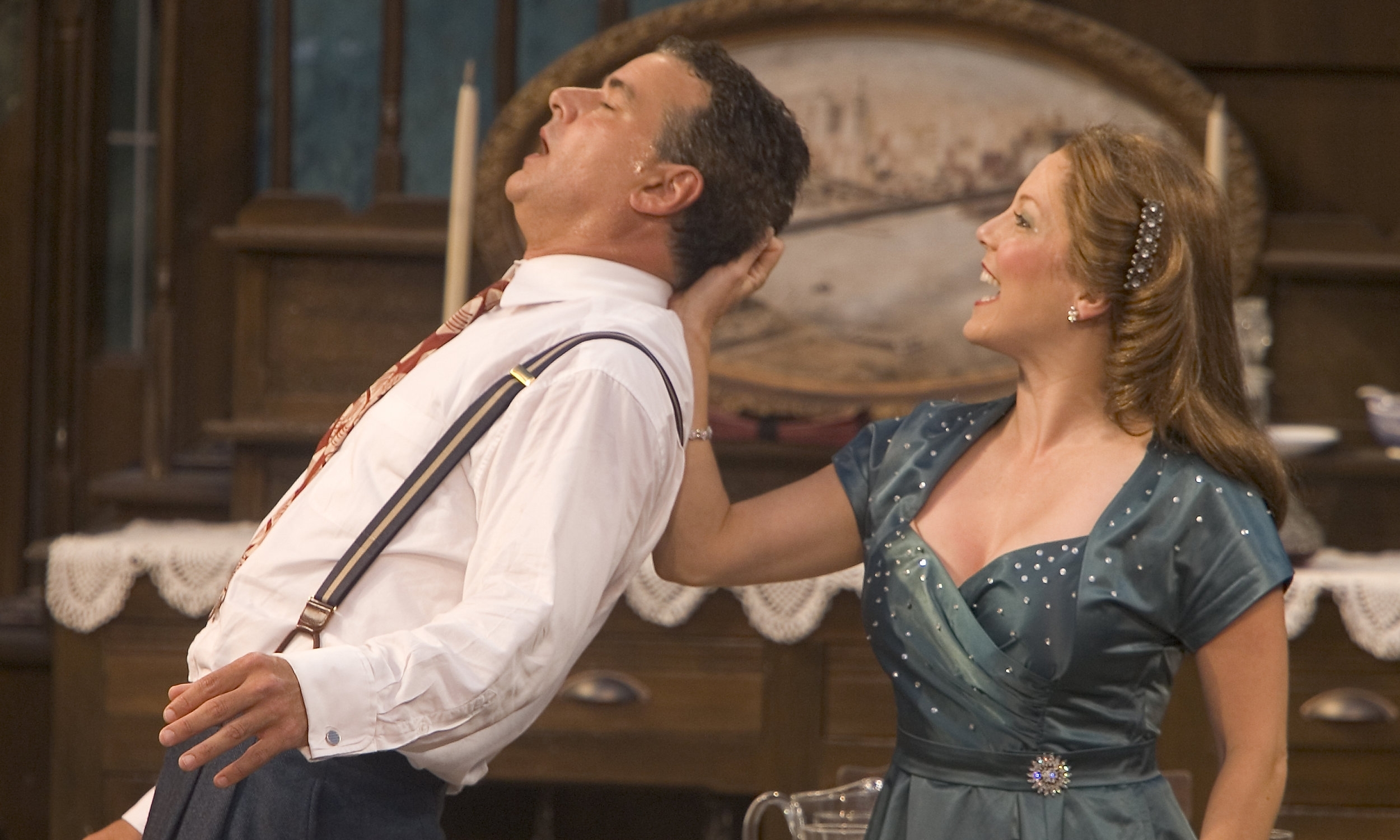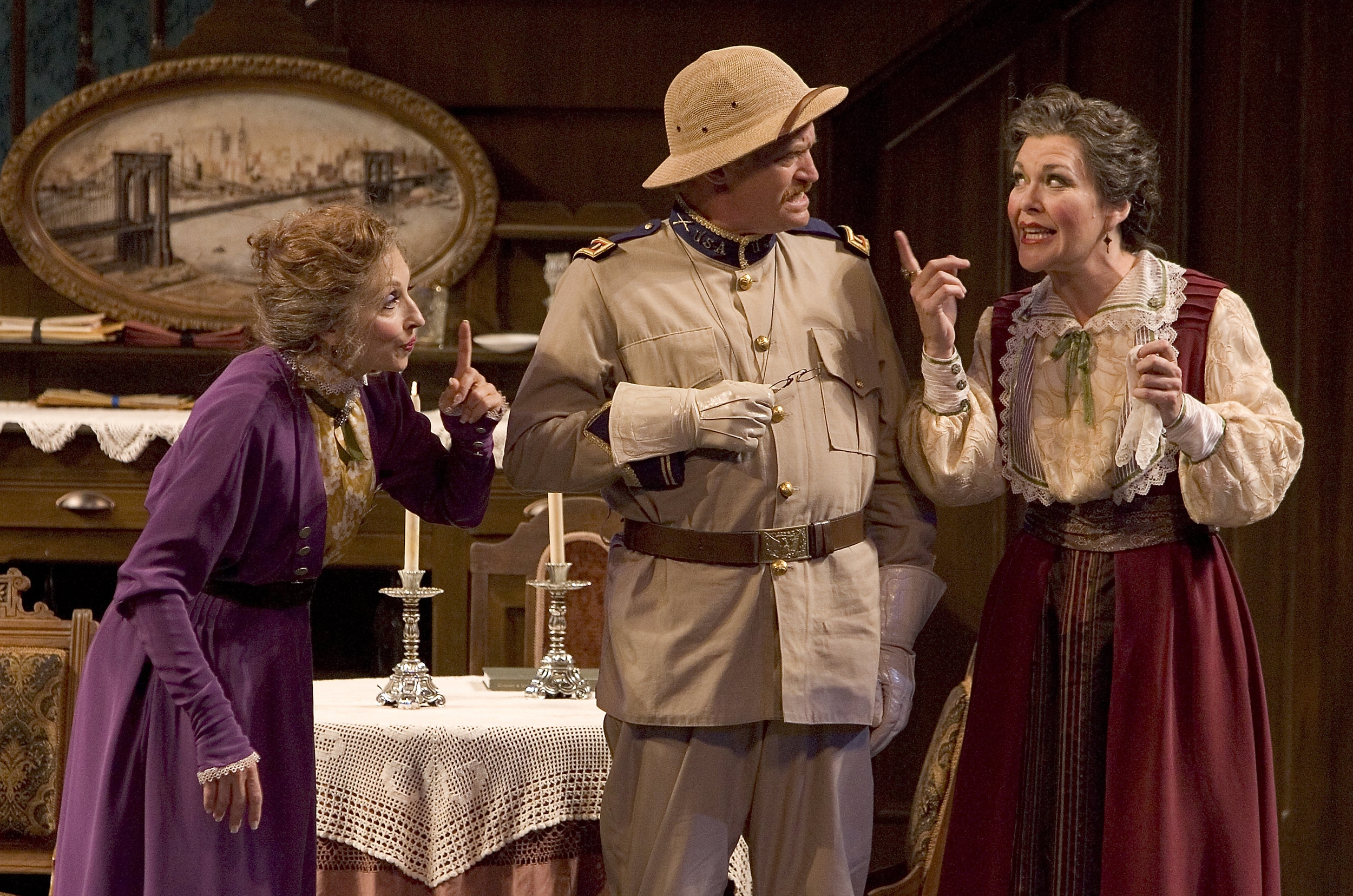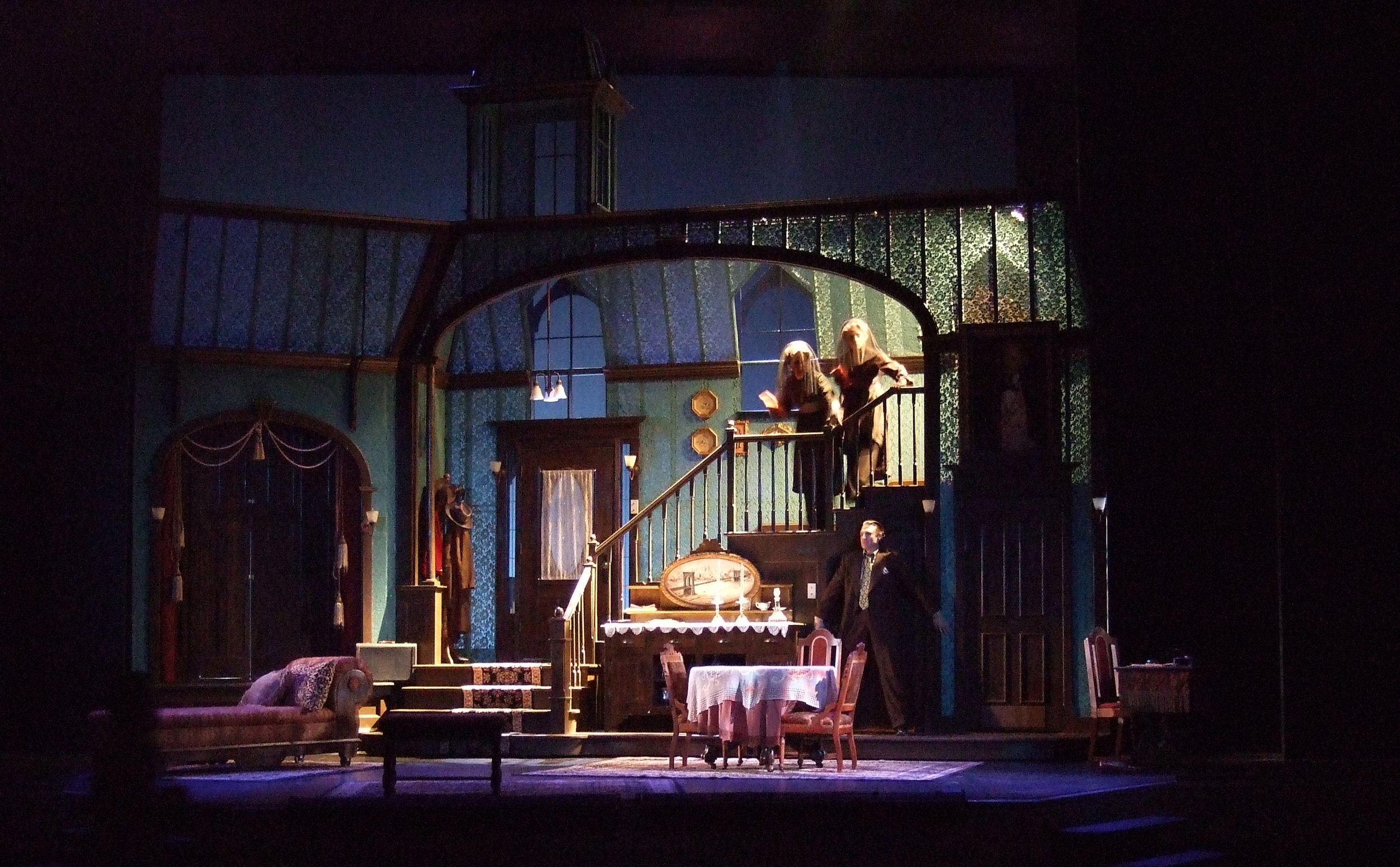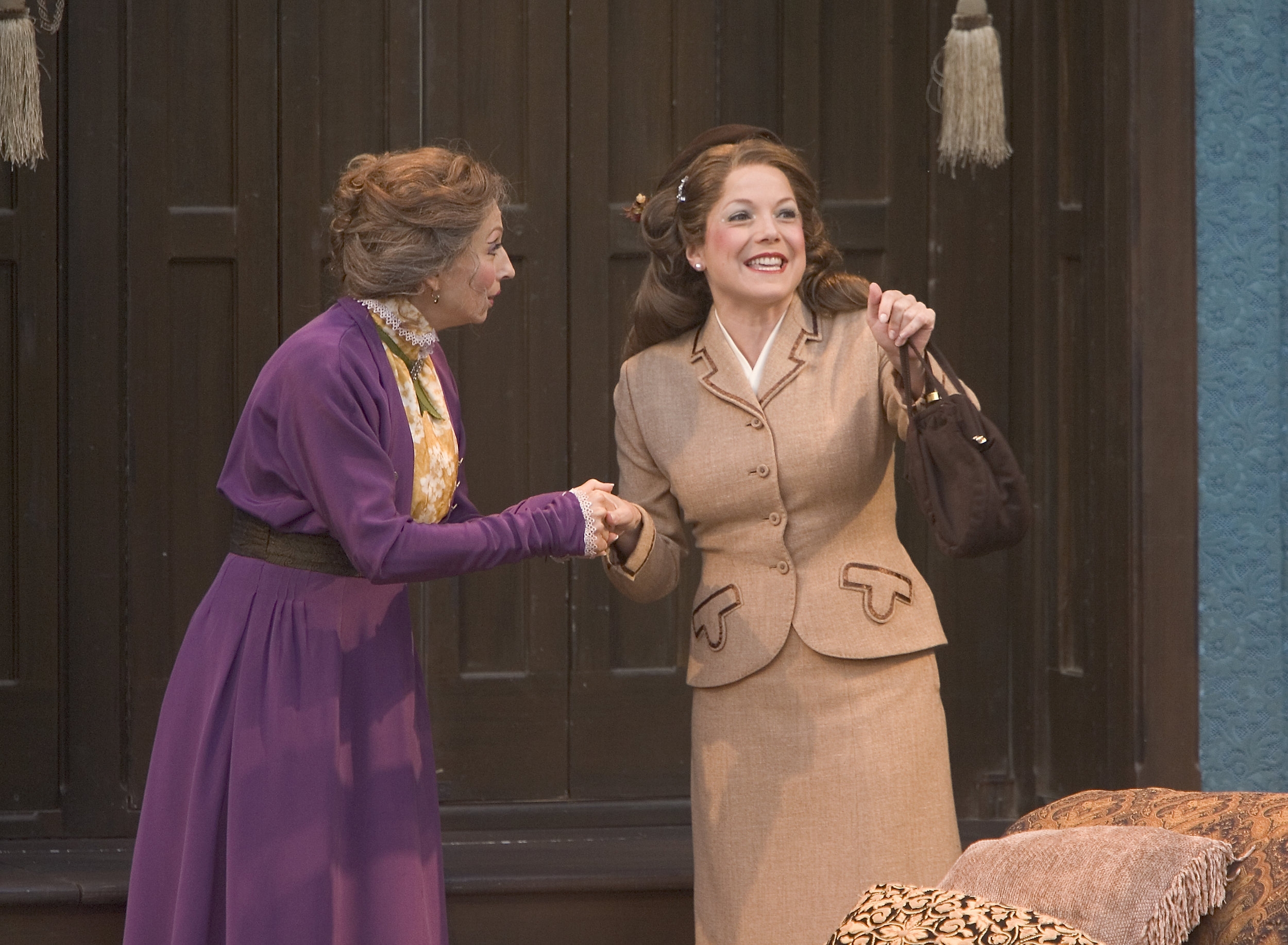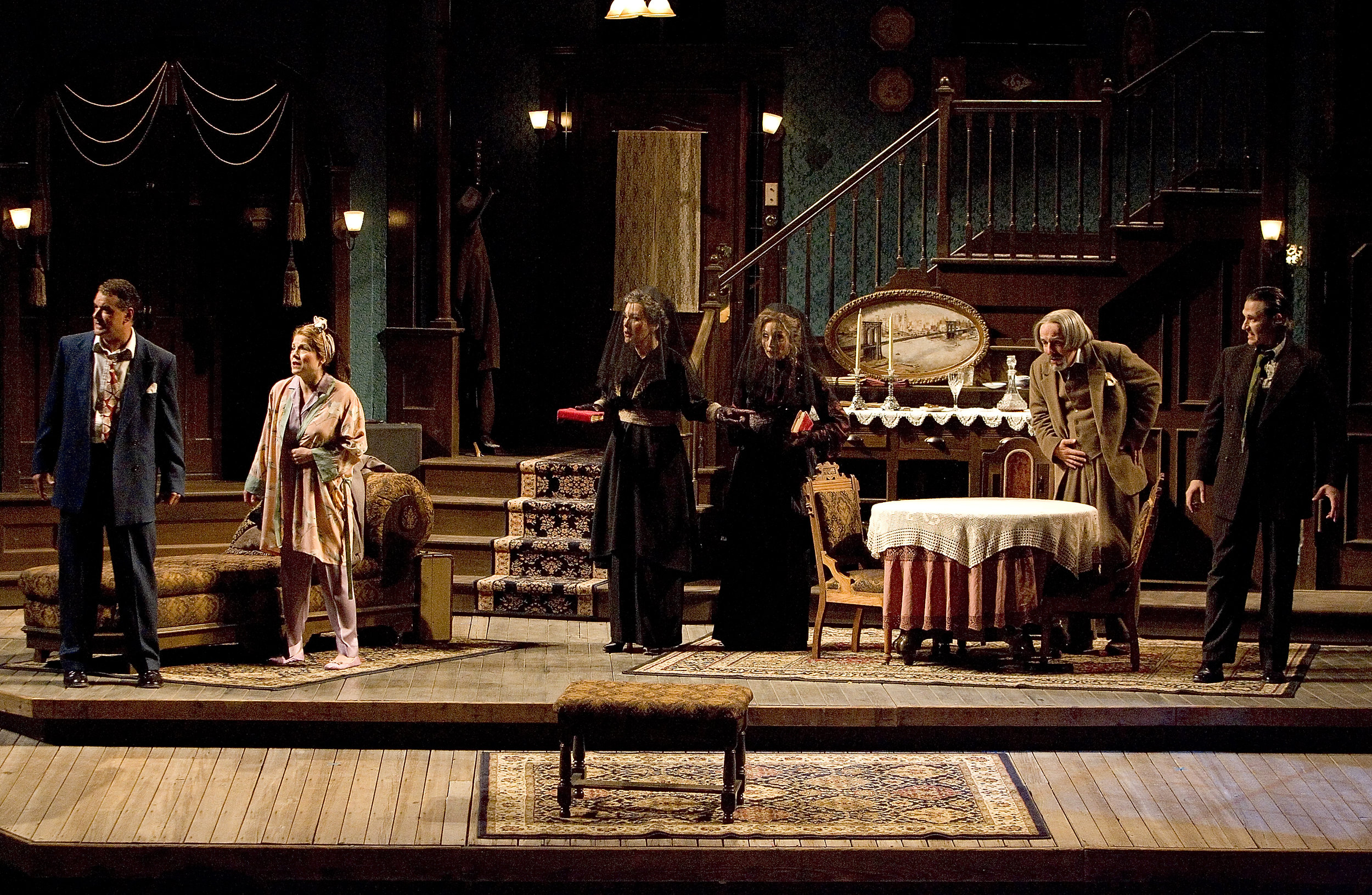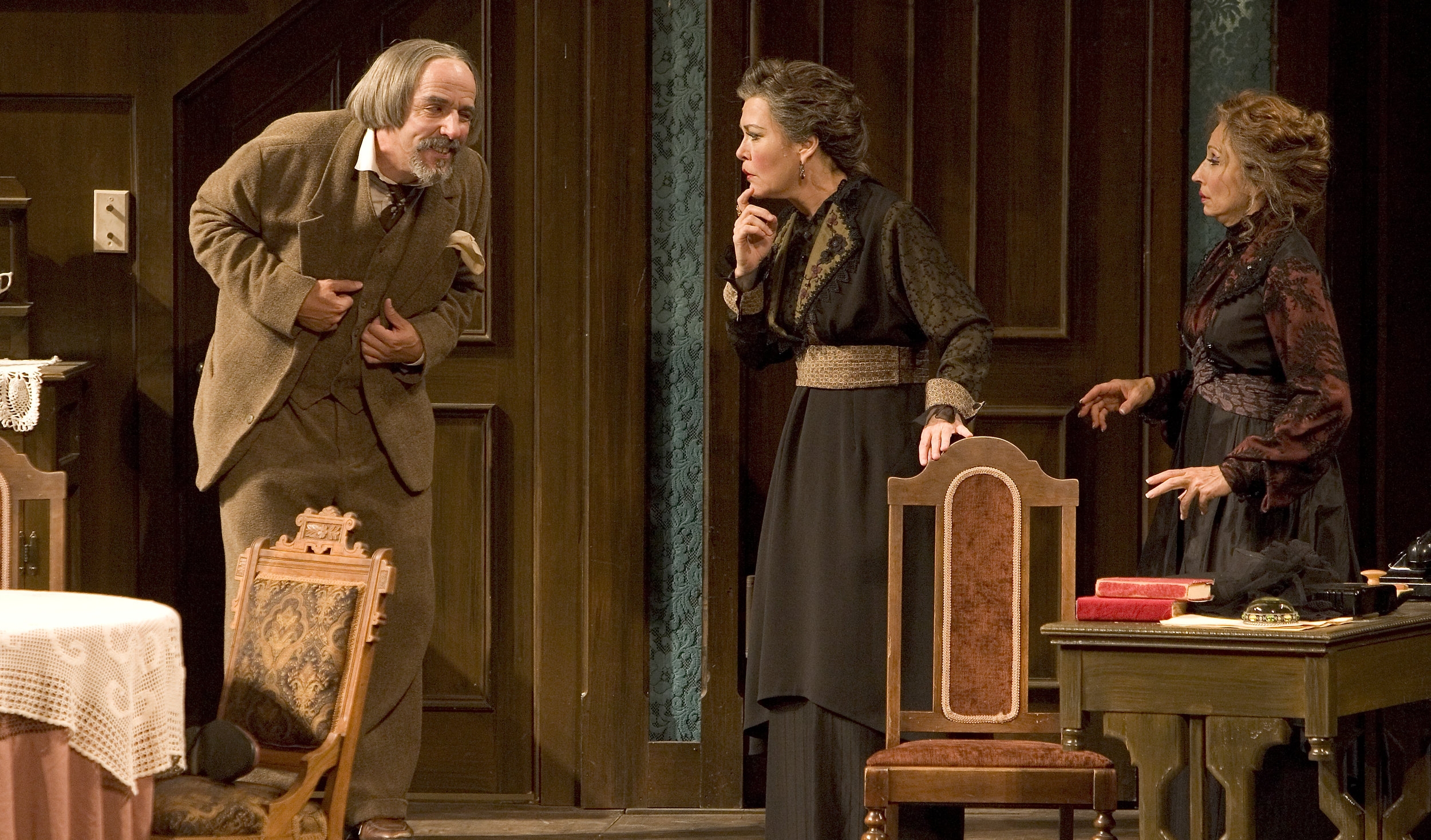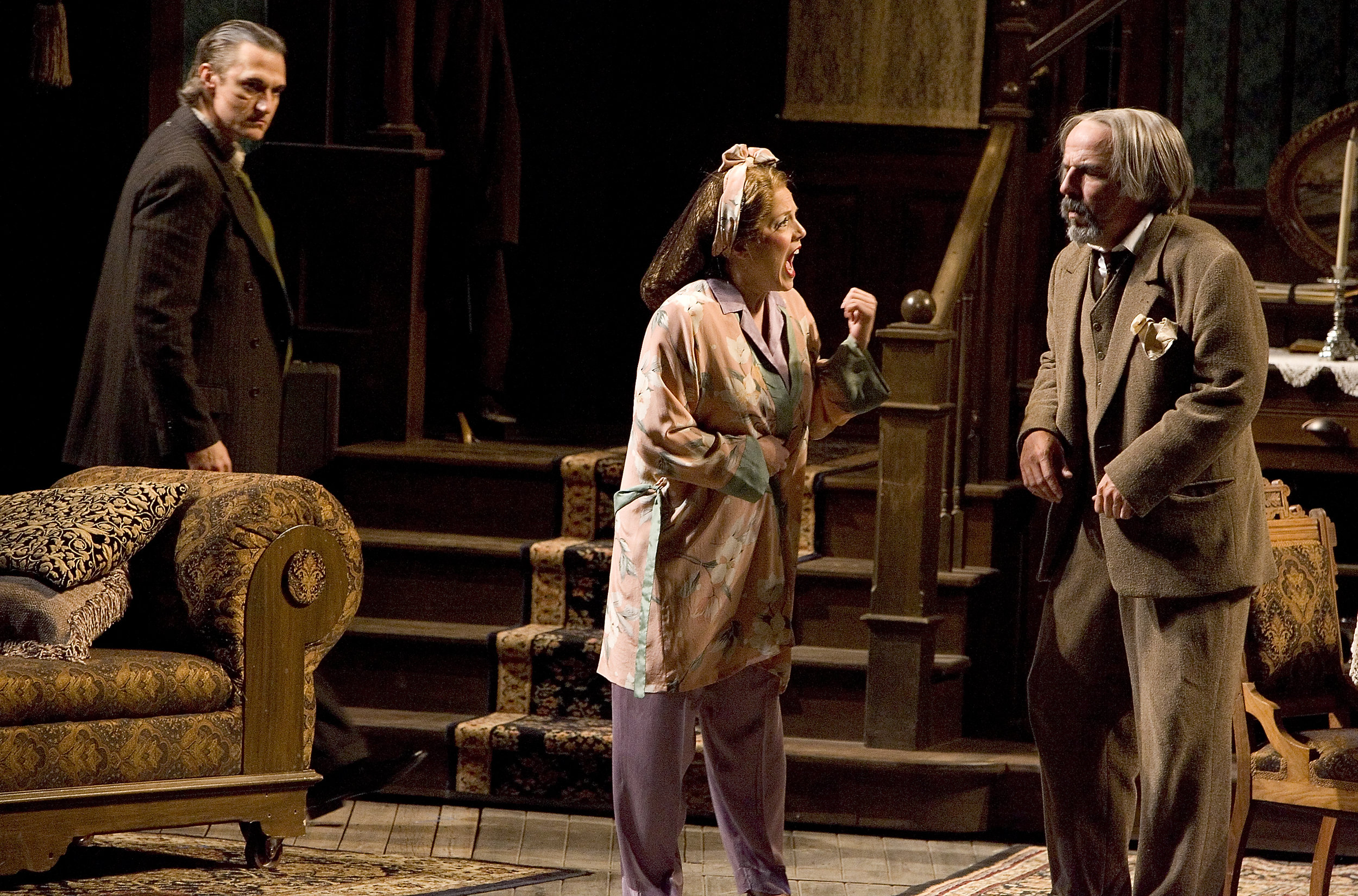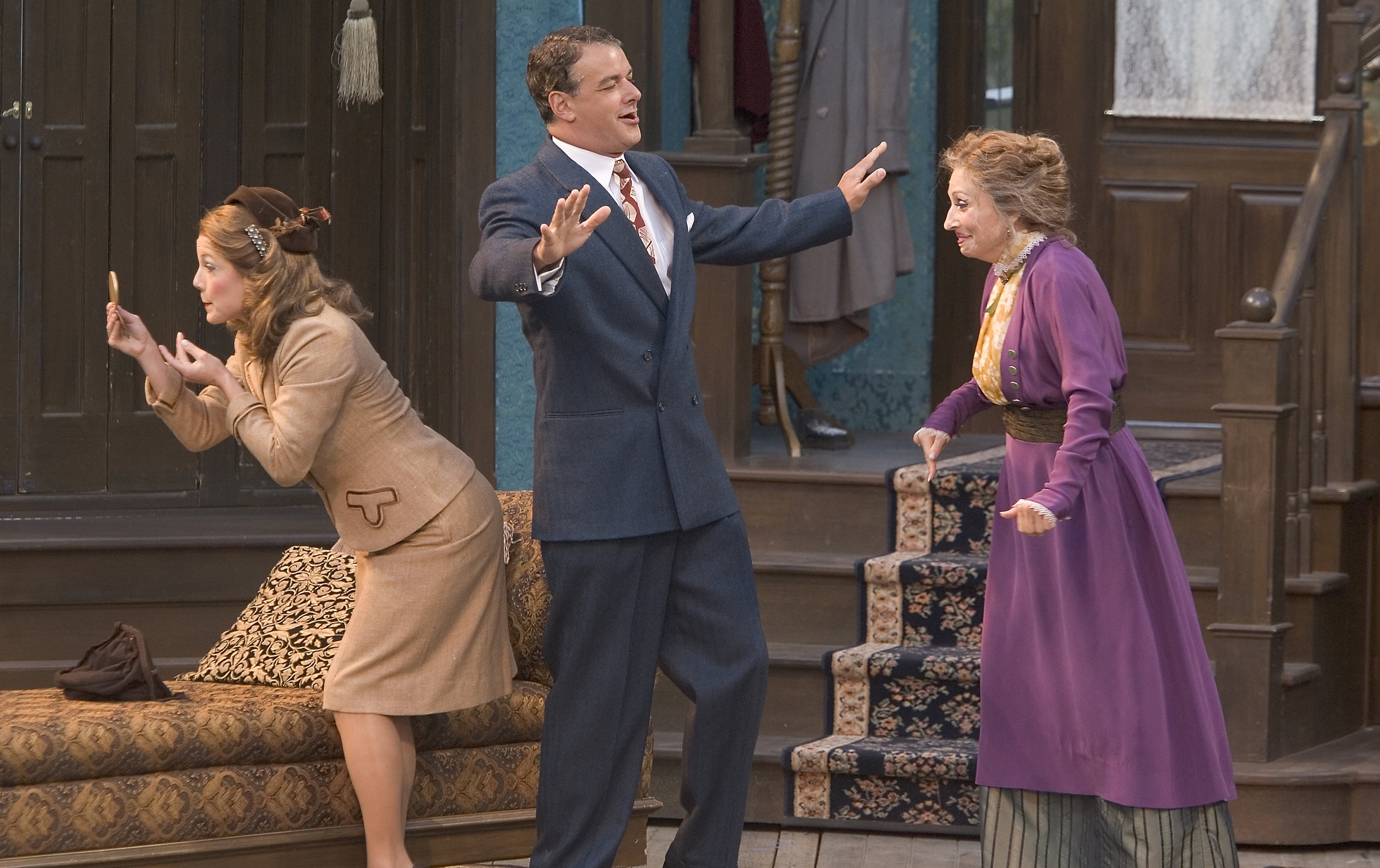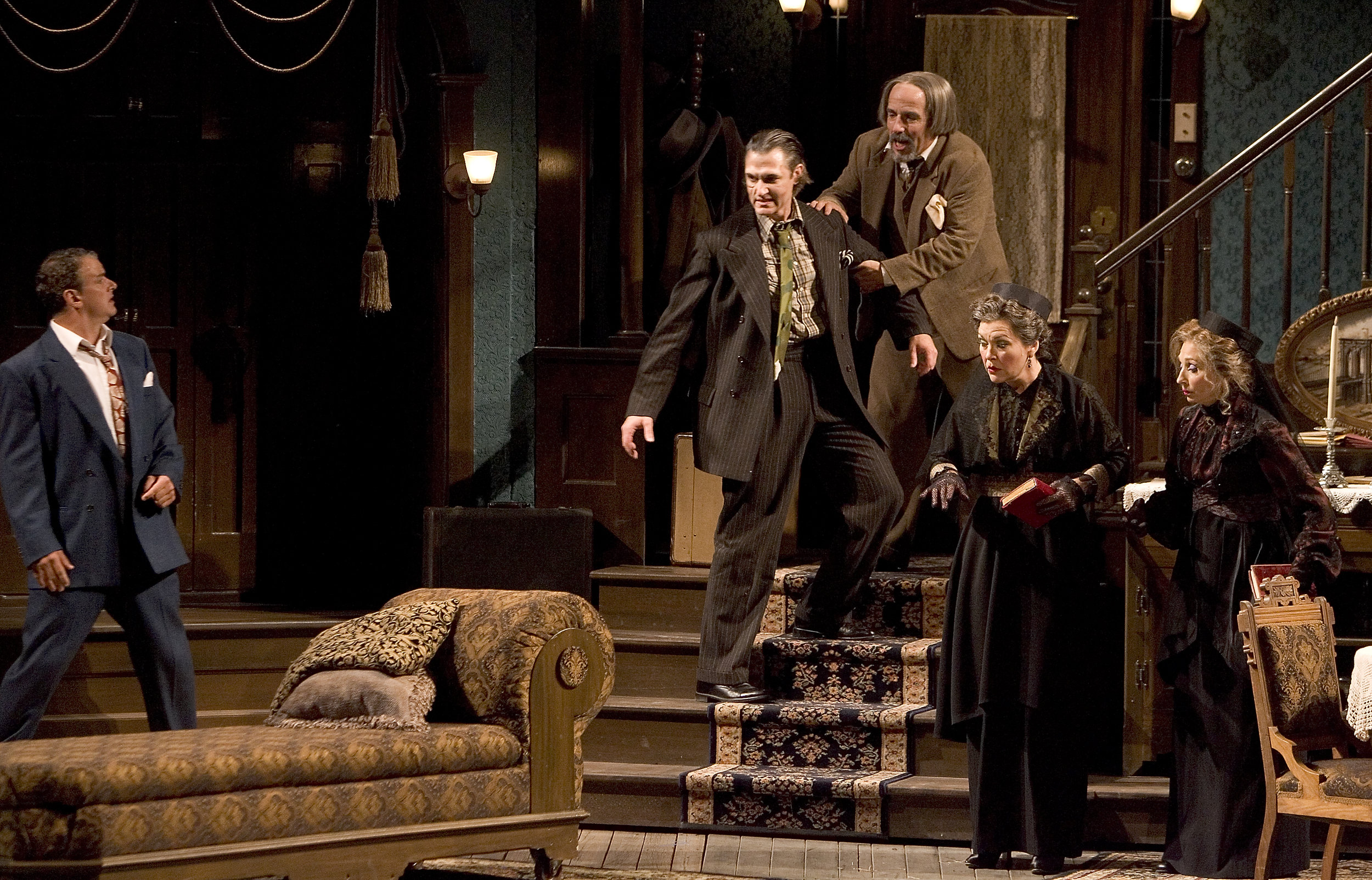ARSENIC AND OLD LACE
Set Design: Russell Metheny | Lighting Design: Mary Louise Geiger
Costume Design: Charlotte Yetman | Sound Design: Peter John Still
Scroll down to read Drew's director's note for Arsenic and Old Lace at Great Lakes Theater and Idaho Shakespeare Festival.
Arsenic and Old Lace | Director's Note
Arsenic and Old Lace is the white zinfandel, if not the elderberry wine, of plays: critics and theater connoisseurs, no different really from wine snobs, will admit to enjoying Joseph Kesselring’s 1939 farce, but only as a guilty pleasure and in select company. After a half-century of sturdy service in countless high schools, colleges and community theaters, wouldn’t it be great if this sweetly lethal play suddenly gotthe bump in street cred that hip hop culture recently conferred upon rosé?
Perhaps that’s too much to hope for a play that has already had its share of good fortune. Originally titled Bodies in the Cellar, Kesselring sent his then serious melodrama to actress Dorothy Stickney, with the hope that she might play one of the Brewster sisters. Stickney’s husband, playwright Howard Lindsay, read the script after hearing Dorothy conspicuously laugh her way through it. Lindsay, in turn, passed the property on to his writing partner, Russel Crouse, with whom he was adapting Life With Father for the stage. (That play continues to hold the record for longest running nonmusical play on Broadway.) Hit-makers Lindsay and Crouse acquired Kesselring’s material and reworked it, adding characters and establishing its idiosyncratic comic tone (“as if Strindberg had written ‘Hellzapoppin’!”). In the end, they gave Kesselring full credit for the play, which would become a smash hit. After opening on January 10, 1941, Arsenic and Old Lace played 1,444 performances on Broadway, 1,332 in London’s West End, before conquering stages around the world in many languages (“Arsenico e Vecchi Merletti” in Italian) and securing its place in the public consciousness with the 1944 film, directed by Frank Capra.
It’s oddly fitting that Joseph Kesselring, a former choir boy who left Manhattan to teach voice and direct amateur musicals at a Mennonite college in Kansas, would become famous for creating a work that sustains and celebrates the community spirit at the heart of theater. Arsenic and Old Lace is, ultimately, a play about family and community. Invoking a microcosm of the normal outside world (president, police force, minister, doctor, critic and madman) within the quaintly crazy confines of the Brewster’s Brooklyn home, the play teases and terrifies us, as it pokes fun at the fear (and secret hope) within us all that our family is just a little bit battier than any other.
-Drew Barr
